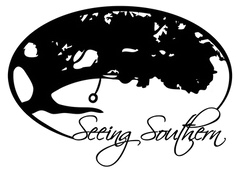|
Sometimes we can find a clear path to the future by looking into the past. So what I want to do right now is to ask you to let your imaginations carry you to the front porch of a two-story Victorian in South Georgia or a wrought iron veranda in New Orleans or maybe just take a walk through a stand of moss-covered live oaks along the Gulf Coast of Alabama. It’s ok if you sweat a little. Feel free to fan yourself a bit of blow the gnats out of your face.
Are you there? First things first. There are some ugly truths in the place we are going. Things that cannot be removed or undone. Indian treaties, Slavery, Jim Crow and one terribly nasty and quite uncivil war. We can’t undo them so we learn from them, become better for it and move on. The future is counting on us. Due to the darkness of our past, we are now a land of great diversity. We still have our issues and we have to continue to work to learn to live together, learn from each other and eventually come to trust each other. In accomplishing those goals, we have a strength of culture – look at our food, our art, our music, our literature: they tell of the lessons that our past has taught us and could only come from a shared experience that is not always pleasant. Today the South is vibrant, hopeful and diverse. We have industry, commerce and our age-old agriculture to provide for our families. So get any thoughts of slavery, the Ku Klux Klan and all that crap out of your head right now. We.re taking that garbage out right now, the truck will pick it up and carry it to the landfill of history where it will be remembered but not repeated. So let’s talk about the South The Prehistoric South The first Southerners came to the area during the Mississippi period. After ages of nomadic people, hunters and gatherers came the first true settlements in the area. This was when people learned that seeds could be placed in the ground, cared for and they could yield stable sustenance. People still relied on hunting and gathering but agriculture enabled them to become long-term inhabitants of the same location. Once people could settle down, they began to form the sort of society that we can really learn from. We can assume the nomadic peoples had a semblance of society but they didn’t leave enough of a mark to know what it really looked like. The Mississippian people planted what are known as the three sisters: corn, beans and squash. Corn grew tall and provided a “pole” for the beans to grown on. Beans returned nitrogen to the soil and the squash made a natural mulch. The three plants all helped each other. So even the crops were in community. These three crops were the staples of these people groups. No doubt other crops were grown but it was the Three Sisters that formed the cornerstone of early Southern agriculture. And to this day, corn, beans and squash are important in Southern cuisine. It was naturally sustainable agriculture. So we know how people came to settle down. Then they began to build a society. We see these sites even today in places like Cartersville, GA, Macon, GA and at the Shiloh Battlefield in southern Tennessee. There are many others but these are three I’ve seen with my own eyes. The people built mounds that remain today. In these mounds researchers have found their tools, ceremonial items, pottery and other items that point us to their ways of life. They built great temples with precision that indicates they studied the movement of celestial bodies and the changing of seasons. They had structure in their society. The gathering places, games and religions indicate a community, not just a town. Eventually groups like the Cherokees and the Creeks would have even more refinement and education built into their societies. Complex government structure and a layered society, agriculture and commerce were all a part of the groups’ ways of life. These Southerners were different than our Mississippian forebears but still similar in many ways. Their harmony with the land, their understanding that the land fed and clothed them made it important and they cared for it as well. The Antebellum South Well, in came the European settlers and remarkably, these people groups were shuttled away – a fact that I think serves as a bit of foreshadowing in our tale that we are working on. The people that “settled” the South were also agrarians. They raised crops, not only for food but for industry as well. Cash crops like cotton and tobacco made many farmers wealthy. Sugar and rice were food crops but also cash crops as these food items came in high demand. Slavery did play an important role but many farmers that did not own slaves also farmed these crops as well. Southerners typically grew all their food as well as their cash crops. What livestock that was raised typically went to feed the people on the farm in question – slave and free alike. Food was not typically imported from off the ground of the farm, much less another state or country. Towns existed to support farms. What little industry emerged in the South was purely secondary to agriculture. People lived on the land, made the most of what they had and knew the importance of the land to their survival. Abusing the land was never a thought. You depended on it too much. The social strata supported community. Even the slaves forged a distinct culture – they made music, told stories, and merged their long-treasured foods into the Southern society. On the other end, the gentlemen used BBQs and parties and especially church (which may have been even more a social event than a spiritual one). These social gatherings were important to the fabric of Southern culture. For rural people, there weren’t really “neighbors” per se. But these opportunities helped to form society, even far from town. The War and Reconstruction I don’t really want to dwell on the increasingly nasty debate pertaining to the real causes of the War Between the States. I want to look at the outcomes – and not the ones talked about a lot today. Primarily, the industrial model of society met the agrarian model on the battlefield. The industrial model was victorious. During the four years that the South had no representation in Washington, all the rules were changed. The South reentered the union to face an industrial economy – one that favored factories and merchants over farmers Almost immediately, Northern businessmen began to buy the farms of Southerners that had no means of affording them. These farms were often consolidated into large operations that supported industry. These former farmers began to form a workforce of cheap labor that Northern industrialists were more than happy to exploit. Soon factories, especially cotton mills, began to spring up all over the South. Small farms began a steady decline that eventually led to their practical extinction. Cities began to really develop. Atlanta, Birmingham, Nashville – places that were really small towns by northern standards, if they existed at all, began to develop as industrial centers. Smog. Sludge. Slag. Over the years cities gave birth to suburbs, highways, strip malls (sounds a lot like “strip mine”, doesn’t it?) and every other generic, cookie cutter idea of development known to man. Blah. In recent years there have been movements that suggest certain reforms are needed. People talk about carbon footprints, sustainable products and organic food grown within 100 miles of the consumption location, ecological awareness and sensitivity. Basically, they want us to be like the Old South. Each and every topic discussed was something that was born in the Dixie of old. They want us to go back – though I don’t think they realize it. Everything that Sherman burned, shot, stabbed or trampled - someone is crying, yearning and begging for right now. So how do we get back? The Challenge of the New South We as Southerners need to lead the way back. But to do that, we have to go back ourselves. We have to learn that architecture is an art, that community is all of us and that agriculture can exist without industry but that industry without agriculture is just pollution created by the starving. I love what Booker T. Washington said, “No race can prosper till it learns that there is as much dignity in tilling a field as in writing a poem.” We need to make industry respect agriculture again. Before the war, a concept like Farm Aid was absurd. Farming was an honest living and successful farmers were among the wealthiest men in the nation. There is no shame in feeding our society. And take this thought with you as you ponder: The average age of a farmer in American is 57. What are you going to be eating in 10 years? So, what are our objectives? I think first and foremost we have to create a friendly atmosphere for agriculture. We need young men and women to want to enter this field. We need to invest time and effort into organizations like the Future Farmers of America. We need kids to know that farming is important and that it is a viable profession – and we need those ideas to be true. We need to remove the stigma that has become associated with the family farm. When people take the time and the effort to grow their own food, make their own clothes, live off the land in a way that is supported by the land they live on, they are not worthy of ridicule. I personally am not lining up to take on that lifestyle myself but we must allow people the right to live in a manner that is best for them. Let them do their thing. We need to have a focus on our community. Let’s be willing to do business with our neighbors. Let’s allow our schools, houses of worship, civic organizations, businesses and families to work together to form a social network in which we can live, do business and raise our children. Our diversity is a strength. Many of our communities might be built on ethnic, religious or cultural similarities. If that is the case they may look less diverse than communities based on other similarities. But each community will depend on the others around it. We can’t get bogged down in forcing communities. Let them form as they will. They have to be organic to be healthy. We need to build beauty in our communities. The natural world is beautiful and that needs to be fostered and protected but we need spaces in our communities that inspire people. Places that make them feel good to be in. The old Southern homes, schools, main streets, town squares – all of it – were typically visually pleasing spaces. There was craftsmanship in the construction. The architecture was an art, not just a structure. We need that again, if for nothing else but our own sanity. So I ask you: What is the carbon footprint of a cotton field? Is community fostered more in a picturesque downtown area or in a generic strip mall? If I need to eat food from within 100 miles at home, what can I practically grow in the 100’ space off my back porch? Do I care enough about my community to do business with my neighbors? Does diversity make us stronger? I think as we seek out the answers to these and other questions, we can find solutions to our problems if we are just willing to take a look backwards and to our South.
0 Comments
Leave a Reply. |
Sam B.Historian, self-proclaimed gentleman, agrarian-at-heart, & curator extraordinaire Social MediaCategories
All
Archives
November 2022
|




 RSS Feed
RSS Feed
